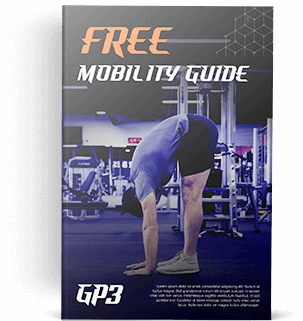Key Points:
1. It takes courage to be open to the possibility that our current training methods may eventually be considered horribly outdated.
2. Only relying on scientific studies to validate your training methods is NOT the answer.
3. “You are a lifelong experiment of one.” Test everything, and remember that nothing that works for you is guaranteed to work for anyone else!
Estimated reading time 4-8 minutes
Last week, we discussed the relative infancy of exercise science as an area of study. I covered this to highlight the importance of not growing dogmatically attached to any particular training method. This also means acknowledging and even embracing the possibility that some of the methods we used to use (or maybe currently use!) were or are suboptimal. Now, we shouldn’t blame ourselves for this. We didn’t know any better. But, we can acknowledge the uncomfortable uncertainty this can yield. First, I think this ability to handle uncertainty is a trait that comes in handy in any situation, but it’s particularly important for practitioners of a relatively young field.
The courage to admit you’re wrong
Contrary to my relatively recent appreciation of reversing movements through multiple joint angles that we discussed last week, I used to believe that the powerlifting standard squat, which is roughly midway between a half squat and an ass-to-grass squat, was the only way to do it. I’m positive I’ve even said in the past that all other squats are useless.
Oh, how wrong I was.
I now see the value of strength and ability through a joint’s entire range of motion, and train my clients and myself accordingly. This is despite having had great results and having helped others achieve great results with the methods I’d used in the past. However, just because something works doesn’t mean it’s the only way, let alone the best way. Openness to being wrong and curiosity to try new methods are going to be ever more important as the strength training world evolves.
This isn’t only applicable to coaches, however. It’s quite important for your training as well! What served you well in your first year of training may be horribly ineffective by your third year. As your body becomes stronger and more competent, it will likely need varying degrees of different stimuli to keep progressing. Knowing when you’ve outgrown a previous training method and not stubbornly clinging to it is one of the most crucial skills you can develop. You can judge this by honestly assessing whether or not you’re continuing to make pain-free progress.
For example, one of my favorite early training methods was known as the 5×5. It’s heavily focused on the barbell movements, particularly the squat. And if your goal is to build strength in the squat, bench, deadlift, and overhead press, it will definitely work. However, after you’ve utilized this method for 6-12 months, you probably never need to use it again. If it’s the only method you use, it’s not well-rounded enough to lead to a balanced, mobile physique. Plus, it even stops being a sufficient stimulus for gaining strength. Now, that last part isn’t anything inherently wrong with the 5×5 program. No program can be followed indefinitely. This is why it’s important to set goals, plan ahead, and reassess your training once or twice per year. Now, “program-hopping,” where you constantly switch to a new method every 4-6 weeks is indeed a recipe for no progress at all. As always, the truth is usually somewhere in the middle.
Don’t be the “Show Me the Study” Guy.
Now we’re going to examine a particular subgroup of individuals in the fitness world who show the exact opposite response to clinging to particular methods. They may be coaches, trainers, or exercise hobbyists, but they share one thing in common. Before they’ll accept the value of any training method, they want to see the hard data supporting it.
When not taken to an extreme, this is quite useful, and its origins are understandable. For a long time, working out was the domain of “meatheads” spouting “broscience.” It was often difficult to tell how much of someone’s results were due to their favored training methods and which could be credited to some combination of work ethic, genetics, and steroids.
In an attempt to become credible with the larger scientific community, there’s been an explosion of exercise science research studies over the last 20 to 30 years. At the risk of sounding obvious, this is a good thing. Well-designed, credible, and replicable studies help us determine which methods are worth devoting our limited time and energy to, and which are worth skipping.
However, “squats are great for building lower body strength and muscle mass,” was true even before there were hundreds of studies confirming it. Likewise, there are major breakthroughs in strength and conditioning that we don’t know about, that haven’t yet been proven by studies. But…they’re still true.
You see, nearly all training-related scientific studies follow a path similar to this:
- Someone sees results they like using a particular training method
- They tell others about it
- Enough people see results that the method gains attention
- Someone decides to test it to see if the method itself meaningfully contributes to the results, or whether it was some combination of other variables.
The point is…every study started as an anecdote
And yet, there are those who are so dependent on scientific studies that they end up having more in common with religious fundamentalists than they’d likely find palatable. “Show me the study or I won’t accept it,” is akin to, “I won’t believe anything that isn’t written in my preferred holy text.”
It ignores the aforementioned point that while scientific studies can affirm what is true, they don’t create truth. For now, I’m going to gloss over the issues of replicability and fraud in scientific fields and pretend everyone in science acts with pure intentions. Suffice it to say, I don’t believe scientists’ livelihood and recognition should depend primarily on their ability to discover new things, as that develops a skewed system of incentives. Replicating and verifying already-completed studies are just as important, but I digress.
To use a more concrete example, there are very few studies on my current favorite exercise, the Nordic hamstring curl. There are a variety of reasons, but chief among them are the high level of difficulty in completing even a single bodyweight-only rep and the fact that they’re relatively inconvenient to perform. You either need a partner, a $750 piece of equipment that does nothing else, or the willingness to take a few minutes to modify a squat rack or Smith Machine to be Nordic-friendly. Further, from my experience learning and coaching this exercise, it takes a minimum of three to six months of dedicated training to achieve your first rep, Due to all of this, I would generously estimate that less than 5% of people who regularly work out can perform a single repetition. I wouldn’t be surprised if the number is less than 1 percent.
This means that of the general population, a tiny fraction of a single percentage point would qualify as candidates to participate in a study about Nordics. So…how are you going to build a study around an exercise like this? The logistical hurdles are too high. And yet, if someone challenged the notion that Nordics are beneficial for one’s hamstrings, I would simply invite them to attempt a single rep. There is nothing like Nordics for your hamstrings, even with a ton of banded assistance, and you’ll understand this perfectly the second you try one.
For a second example, last year I unintentionally created what I now call the RAC Method. It stands for Repeated Antagonist Contractions, and anecdotal evidence from testing it on myself and my clients suggests that it’s a great way to increase the comfortable range of motion in one’s quads and hamstrings. I believe it’s quite applicable to other muscle groups as well; it just hasn’t been tested yet. I’m in the process of having it examined by professionals in the National Strength and Conditioning Association, with the hopes of having it studied in a lab setting so that we can see if the data supports the anecdotes.
In the meantime, I’ve seen it help dozens of people, more quickly, more effectively, and more permanently than traditional static stretching. Regardless of how or why it works, refusing to try it because it hasn’t yet been studied is to deny oneself the benefits it seems to offer!
In the end, the best advice is to be curious and open-minded
The second we decide that a particular method is “the best” or “superior” to all the others is the second we start missing out. Remember the wise words of my aptly named exercise science teacher, Professor True, “You are a lifelong experiment of one.” We can be open to anything, and try everything that appeals to us, and even some things that don’t. We should take what works and leave behind what doesn’t. We should absolutely share our successes and failures, while remembering that anything that works for us as an individual is not guaranteed to work for even a single other person. At the end of the day, we can’t take it personally if someone dislikes our favorite methods. If they find something that works better for them, great! Just avoid getting caught up in a pointless argument about what’s “better.” It’s a dead end.
Okay, enough preaching. Time to enjoy experimenting, learning, and living!
In the meantime, before you go, I’d love to hear from you! Do you have an example of a training method you used to love but no longer utilize? Reply and let me know!

